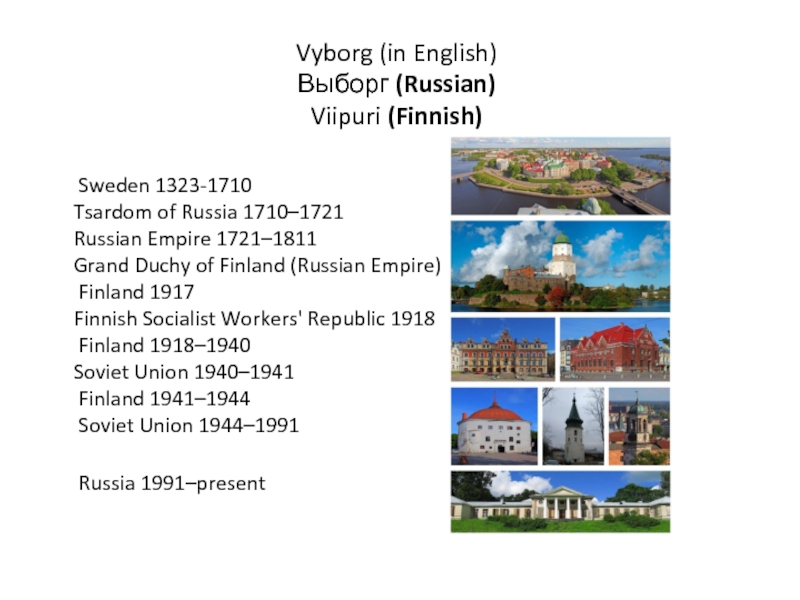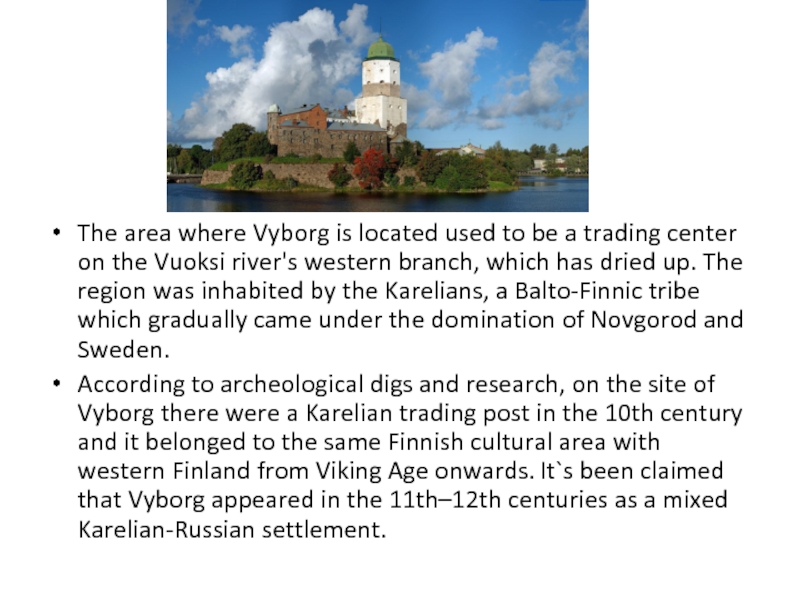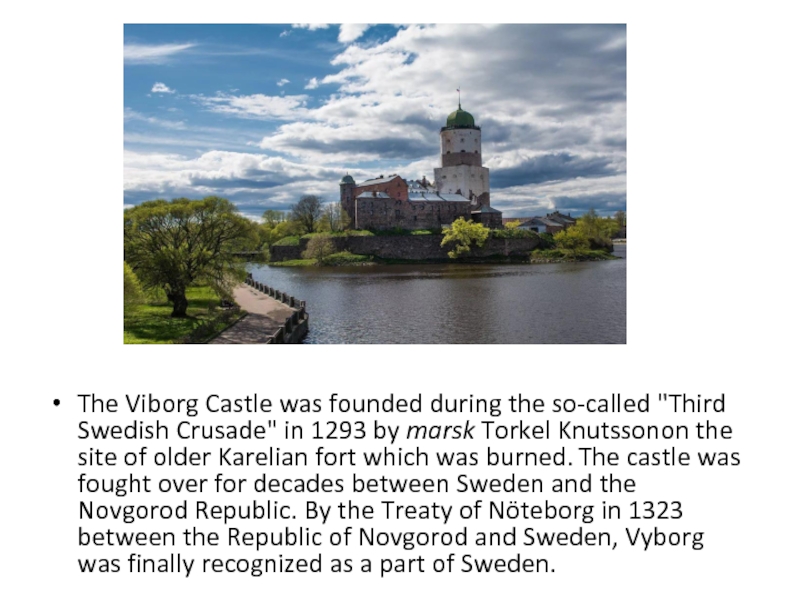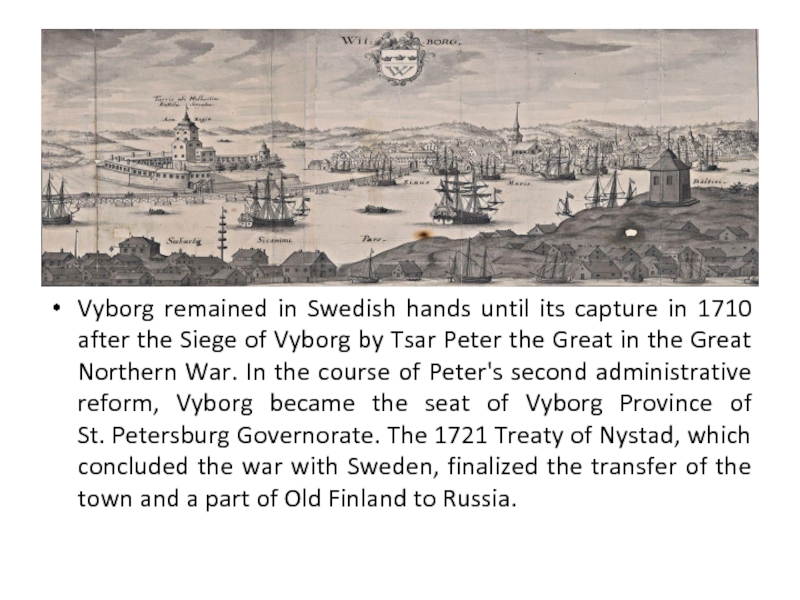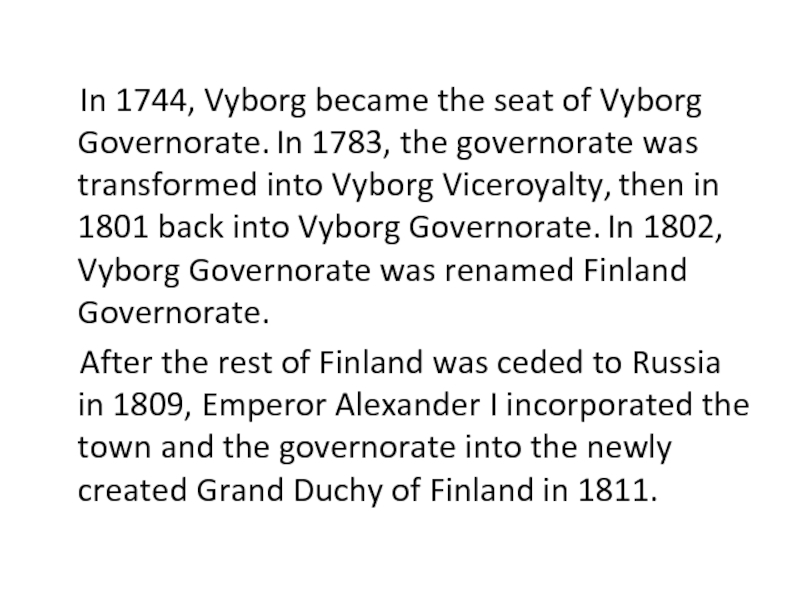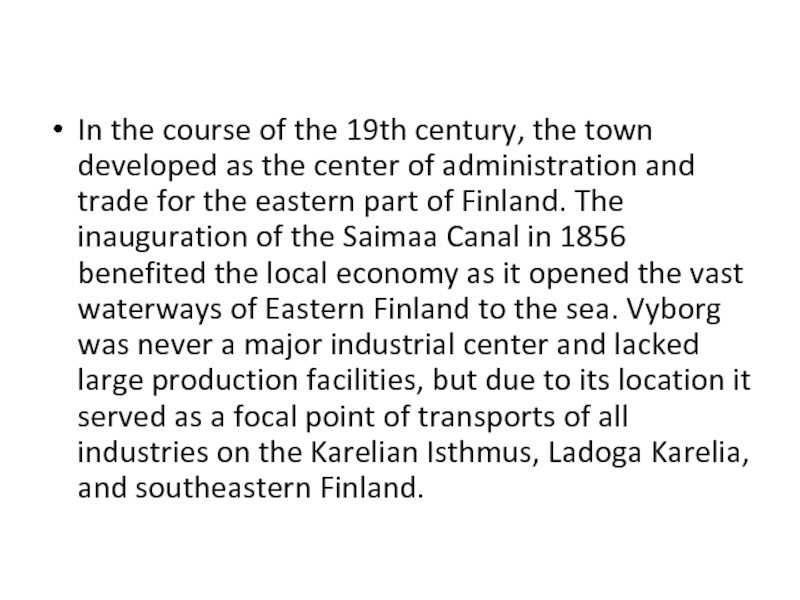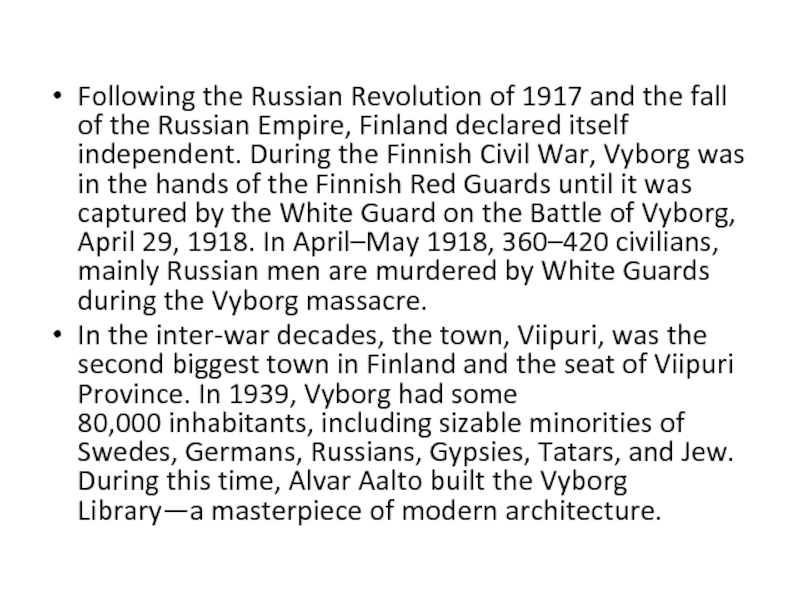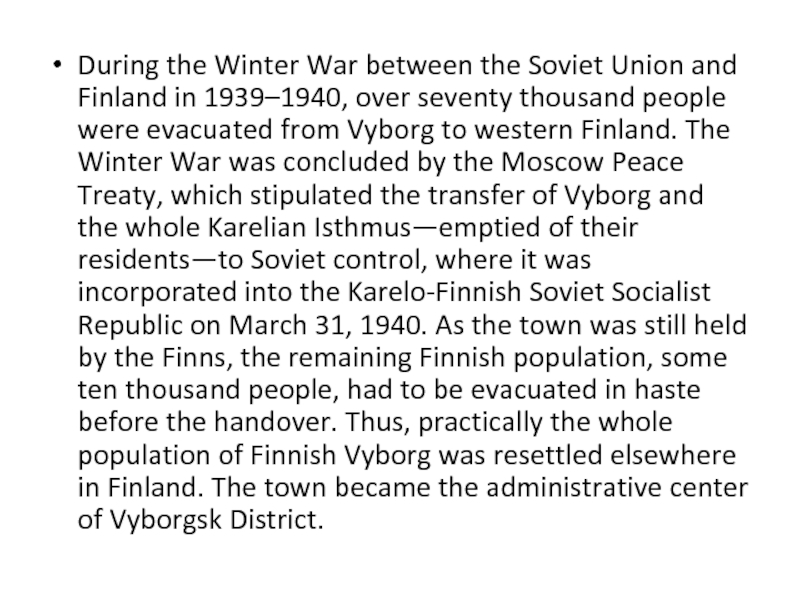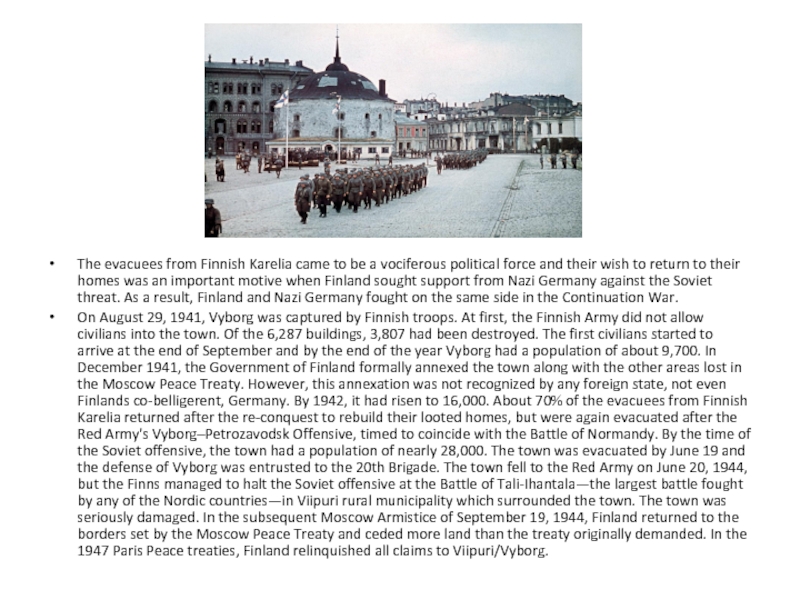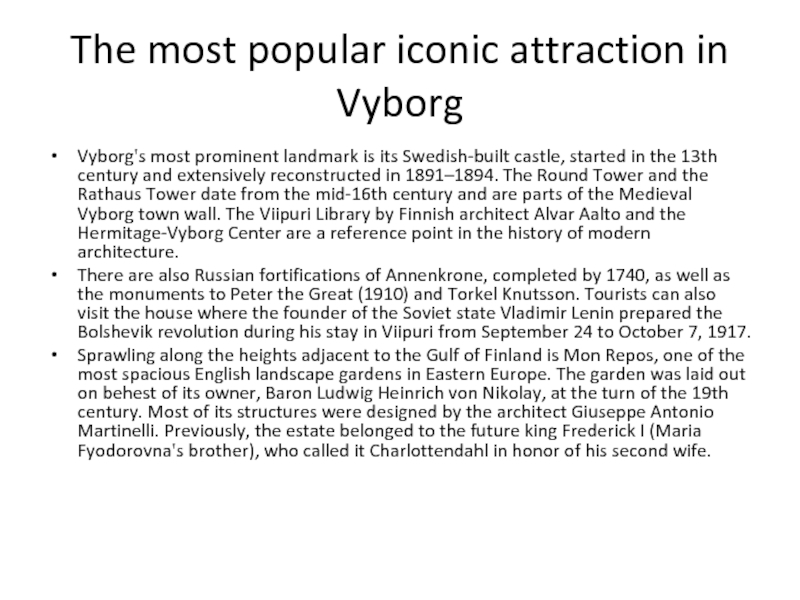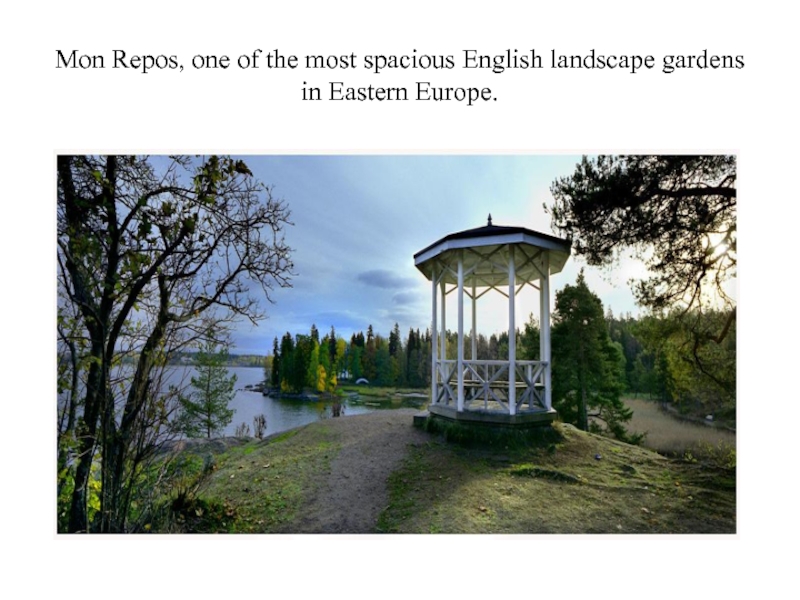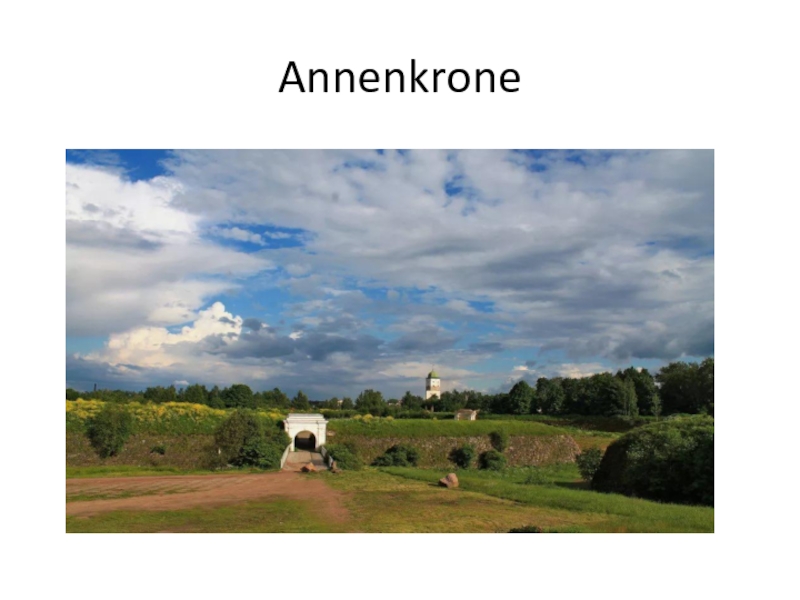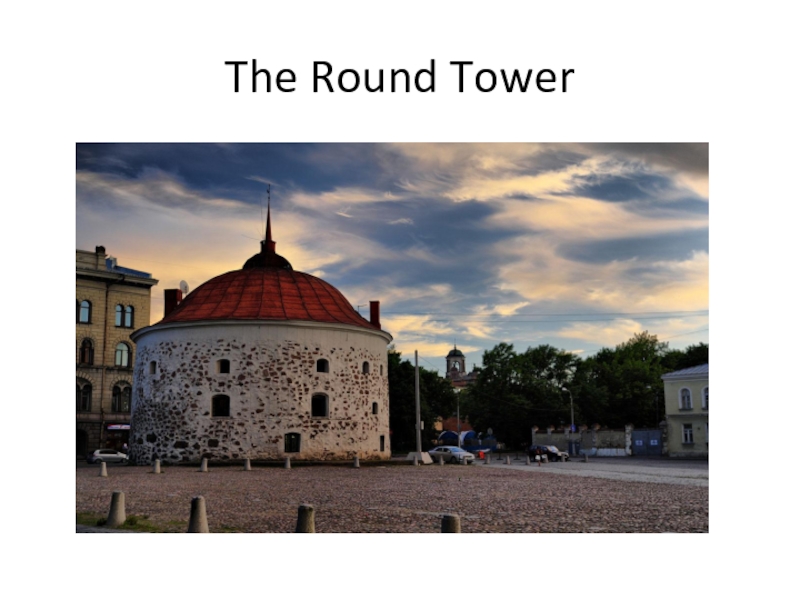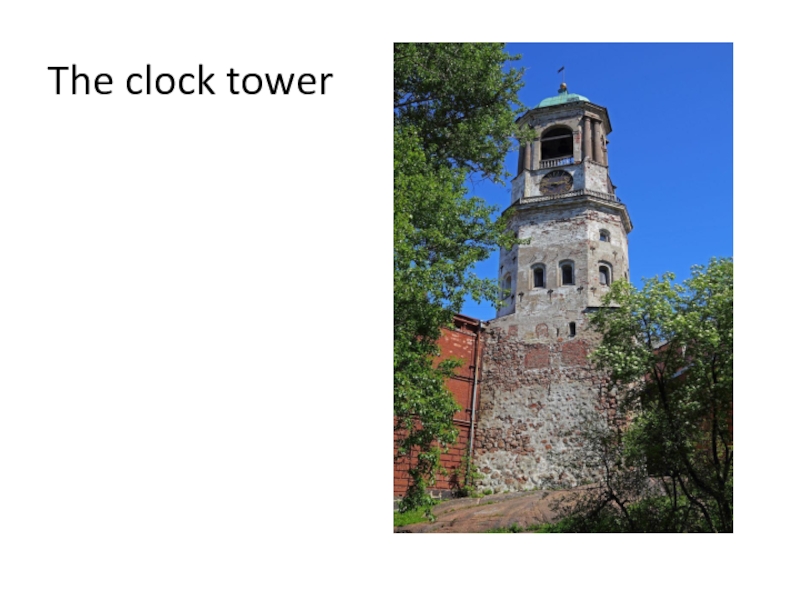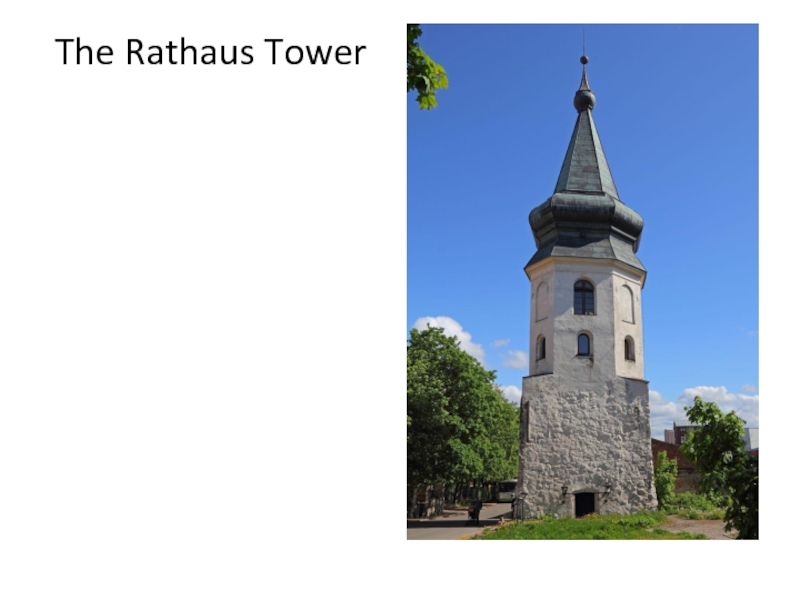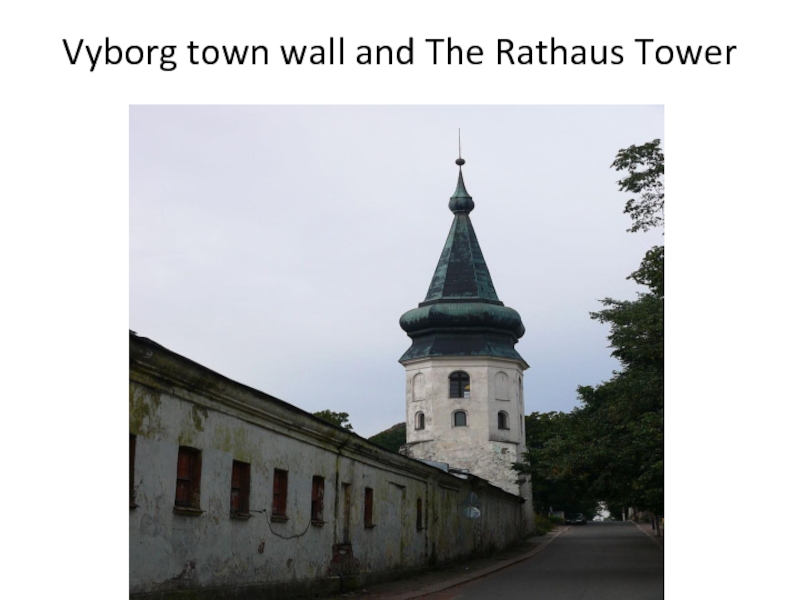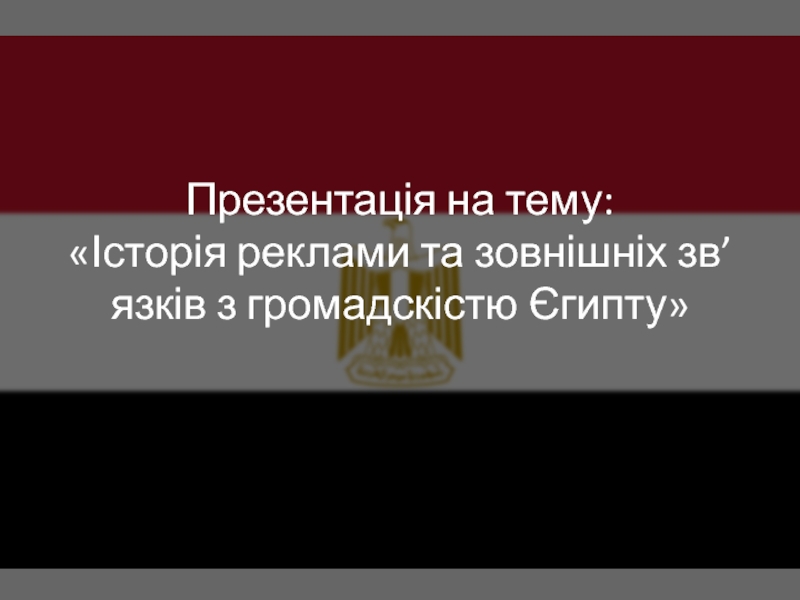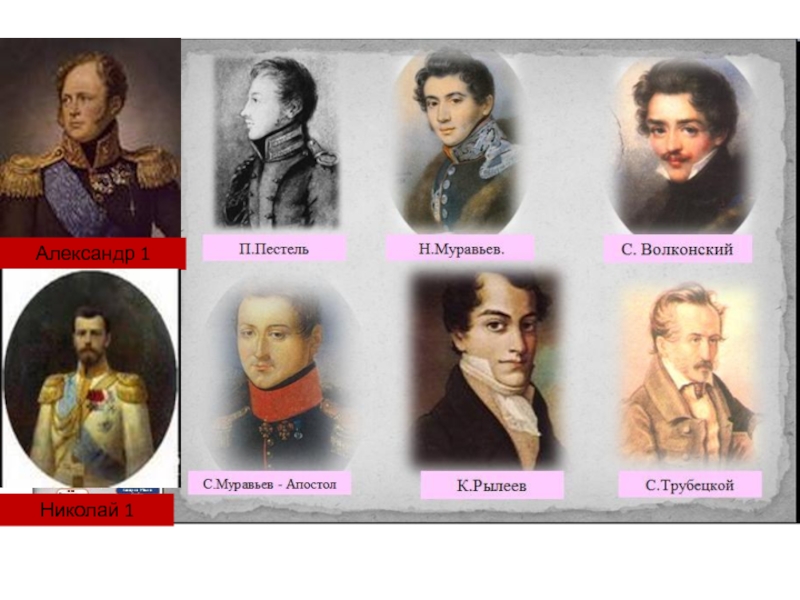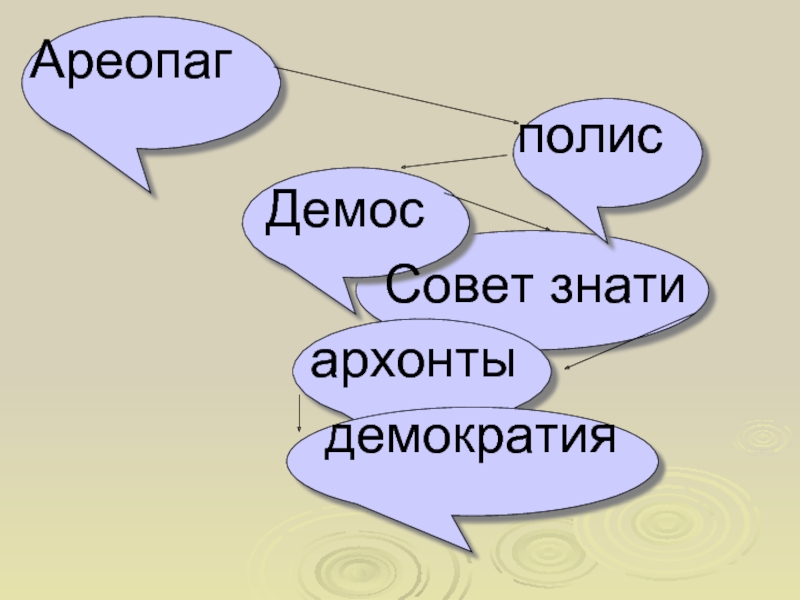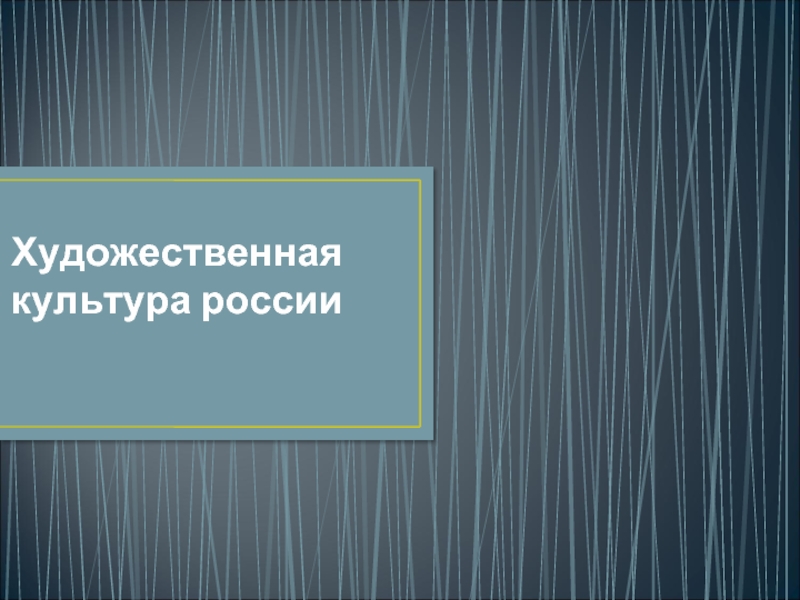of Finland (Russian Empire) 1811-1917
Finland 1917
Finnish Socialist Workers' Republic 1918
Finland 1918–1940
Soviet Union 1940–1941
Finland 1941–1944
Soviet Union 1944–1991
Russia 1991–present
- Главная
- Разное
- Дизайн
- Бизнес и предпринимательство
- Аналитика
- Образование
- Развлечения
- Красота и здоровье
- Финансы
- Государство
- Путешествия
- Спорт
- Недвижимость
- Армия
- Графика
- Культурология
- Еда и кулинария
- Лингвистика
- Английский язык
- Астрономия
- Алгебра
- Биология
- География
- Детские презентации
- Информатика
- История
- Литература
- Маркетинг
- Математика
- Медицина
- Менеджмент
- Музыка
- МХК
- Немецкий язык
- ОБЖ
- Обществознание
- Окружающий мир
- Педагогика
- Русский язык
- Технология
- Физика
- Философия
- Химия
- Шаблоны, картинки для презентаций
- Экология
- Экономика
- Юриспруденция
Grand Duchy of Finland (Russian Empire) 1811-1917 презентация
Содержание
- 1. Grand Duchy of Finland (Russian Empire) 1811-1917
- 2. The area where Vyborg is located
- 3. The Viborg Castle was founded during
- 4. Vyborg remained in Swedish hands until
- 5. In 1744, Vyborg became the
- 6. In the course of the 19th century,
- 7. Following the Russian Revolution of 1917 and
- 8. During the Winter War between the Soviet
- 9. The evacuees from Finnish Karelia
- 10. The most popular iconic attraction in Vyborg
- 11. Mon Repos, one of the most spacious English landscape gardens in Eastern Europe.
- 12. Mon Repos, one of the most spacious English landscape gardens in Eastern Europe.
- 13. Annenkrone
- 14. The Round Tower
- 15. The clock tower
- 16. The Rathaus Tower
- 17. Vyborg town wall and The Rathaus Tower
- 18. The Viipuri Library by Finnish architect Alvar Aalto
- 19. Notable people Bolshevik revolutionary Vladimir Lenin lived
Слайд 1Vyborg (in English)
Выборг (Russian)
Viipuri (Finnish)
Sweden 1323-1710
Tsardom of Russia 1710–1721
Russian Empire 1721–1811
Grand Duchy
Слайд 2
The area where Vyborg is located used to be a trading
center on the Vuoksi river's western branch, which has dried up. The region was inhabited by the Karelians, a Balto-Finnic tribe which gradually came under the domination of Novgorod and Sweden.
According to archeological digs and research, on the site of Vyborg there were a Karelian trading post in the 10th century and it belonged to the same Finnish cultural area with western Finland from Viking Age onwards. It`s been claimed that Vyborg appeared in the 11th–12th centuries as a mixed Karelian-Russian settlement.
According to archeological digs and research, on the site of Vyborg there were a Karelian trading post in the 10th century and it belonged to the same Finnish cultural area with western Finland from Viking Age onwards. It`s been claimed that Vyborg appeared in the 11th–12th centuries as a mixed Karelian-Russian settlement.
Слайд 3
The Viborg Castle was founded during the so-called "Third Swedish Crusade"
in 1293 by marsk Torkel Knutssonon the site of older Karelian fort which was burned. The castle was fought over for decades between Sweden and the Novgorod Republic. By the Treaty of Nöteborg in 1323 between the Republic of Novgorod and Sweden, Vyborg was finally recognized as a part of Sweden.
Слайд 4
Vyborg remained in Swedish hands until its capture in 1710 after
the Siege of Vyborg by Tsar Peter the Great in the Great Northern War. In the course of Peter's second administrative reform, Vyborg became the seat of Vyborg Province of St. Petersburg Governorate. The 1721 Treaty of Nystad, which concluded the war with Sweden, finalized the transfer of the town and a part of Old Finland to Russia.
Слайд 5 In 1744, Vyborg became the seat of Vyborg Governorate.
In 1783, the governorate was transformed into Vyborg Viceroyalty, then in 1801 back into Vyborg Governorate. In 1802, Vyborg Governorate was renamed Finland Governorate.
After the rest of Finland was ceded to Russia in 1809, Emperor Alexander I incorporated the town and the governorate into the newly created Grand Duchy of Finland in 1811.
After the rest of Finland was ceded to Russia in 1809, Emperor Alexander I incorporated the town and the governorate into the newly created Grand Duchy of Finland in 1811.
Слайд 6In the course of the 19th century, the town developed as
the center of administration and trade for the eastern part of Finland. The inauguration of the Saimaa Canal in 1856 benefited the local economy as it opened the vast waterways of Eastern Finland to the sea. Vyborg was never a major industrial center and lacked large production facilities, but due to its location it served as a focal point of transports of all industries on the Karelian Isthmus, Ladoga Karelia, and southeastern Finland.
Слайд 7Following the Russian Revolution of 1917 and the fall of the
Russian Empire, Finland declared itself independent. During the Finnish Civil War, Vyborg was in the hands of the Finnish Red Guards until it was captured by the White Guard on the Battle of Vyborg, April 29, 1918. In April–May 1918, 360–420 civilians, mainly Russian men are murdered by White Guards during the Vyborg massacre.
In the inter-war decades, the town, Viipuri, was the second biggest town in Finland and the seat of Viipuri Province. In 1939, Vyborg had some 80,000 inhabitants, including sizable minorities of Swedes, Germans, Russians, Gypsies, Tatars, and Jew. During this time, Alvar Aalto built the Vyborg Library—a masterpiece of modern architecture.
In the inter-war decades, the town, Viipuri, was the second biggest town in Finland and the seat of Viipuri Province. In 1939, Vyborg had some 80,000 inhabitants, including sizable minorities of Swedes, Germans, Russians, Gypsies, Tatars, and Jew. During this time, Alvar Aalto built the Vyborg Library—a masterpiece of modern architecture.
Слайд 8During the Winter War between the Soviet Union and Finland in
1939–1940, over seventy thousand people were evacuated from Vyborg to western Finland. The Winter War was concluded by the Moscow Peace Treaty, which stipulated the transfer of Vyborg and the whole Karelian Isthmus—emptied of their residents—to Soviet control, where it was incorporated into the Karelo-Finnish Soviet Socialist Republic on March 31, 1940. As the town was still held by the Finns, the remaining Finnish population, some ten thousand people, had to be evacuated in haste before the handover. Thus, practically the whole population of Finnish Vyborg was resettled elsewhere in Finland. The town became the administrative center of Vyborgsk District.
Слайд 9
The evacuees from Finnish Karelia came to be a vociferous political
force and their wish to return to their homes was an important motive when Finland sought support from Nazi Germany against the Soviet threat. As a result, Finland and Nazi Germany fought on the same side in the Continuation War.
On August 29, 1941, Vyborg was captured by Finnish troops. At first, the Finnish Army did not allow civilians into the town. Of the 6,287 buildings, 3,807 had been destroyed. The first civilians started to arrive at the end of September and by the end of the year Vyborg had a population of about 9,700. In December 1941, the Government of Finland formally annexed the town along with the other areas lost in the Moscow Peace Treaty. However, this annexation was not recognized by any foreign state, not even Finlands co-belligerent, Germany. By 1942, it had risen to 16,000. About 70% of the evacuees from Finnish Karelia returned after the re-conquest to rebuild their looted homes, but were again evacuated after the Red Army's Vyborg–Petrozavodsk Offensive, timed to coincide with the Battle of Normandy. By the time of the Soviet offensive, the town had a population of nearly 28,000. The town was evacuated by June 19 and the defense of Vyborg was entrusted to the 20th Brigade. The town fell to the Red Army on June 20, 1944, but the Finns managed to halt the Soviet offensive at the Battle of Tali-Ihantala—the largest battle fought by any of the Nordic countries—in Viipuri rural municipality which surrounded the town. The town was seriously damaged. In the subsequent Moscow Armistice of September 19, 1944, Finland returned to the borders set by the Moscow Peace Treaty and ceded more land than the treaty originally demanded. In the 1947 Paris Peace treaties, Finland relinquished all claims to Viipuri/Vyborg.
On August 29, 1941, Vyborg was captured by Finnish troops. At first, the Finnish Army did not allow civilians into the town. Of the 6,287 buildings, 3,807 had been destroyed. The first civilians started to arrive at the end of September and by the end of the year Vyborg had a population of about 9,700. In December 1941, the Government of Finland formally annexed the town along with the other areas lost in the Moscow Peace Treaty. However, this annexation was not recognized by any foreign state, not even Finlands co-belligerent, Germany. By 1942, it had risen to 16,000. About 70% of the evacuees from Finnish Karelia returned after the re-conquest to rebuild their looted homes, but were again evacuated after the Red Army's Vyborg–Petrozavodsk Offensive, timed to coincide with the Battle of Normandy. By the time of the Soviet offensive, the town had a population of nearly 28,000. The town was evacuated by June 19 and the defense of Vyborg was entrusted to the 20th Brigade. The town fell to the Red Army on June 20, 1944, but the Finns managed to halt the Soviet offensive at the Battle of Tali-Ihantala—the largest battle fought by any of the Nordic countries—in Viipuri rural municipality which surrounded the town. The town was seriously damaged. In the subsequent Moscow Armistice of September 19, 1944, Finland returned to the borders set by the Moscow Peace Treaty and ceded more land than the treaty originally demanded. In the 1947 Paris Peace treaties, Finland relinquished all claims to Viipuri/Vyborg.
In
Слайд 10The most popular iconic attraction in Vyborg
Vyborg's most prominent landmark is
its Swedish-built castle, started in the 13th century and extensively reconstructed in 1891–1894. The Round Tower and the Rathaus Tower date from the mid-16th century and are parts of the Medieval Vyborg town wall. The Viipuri Library by Finnish architect Alvar Aalto and the Hermitage-Vyborg Center are a reference point in the history of modern architecture.
There are also Russian fortifications of Annenkrone, completed by 1740, as well as the monuments to Peter the Great (1910) and Torkel Knutsson. Tourists can also visit the house where the founder of the Soviet state Vladimir Lenin prepared the Bolshevik revolution during his stay in Viipuri from September 24 to October 7, 1917.
Sprawling along the heights adjacent to the Gulf of Finland is Mon Repos, one of the most spacious English landscape gardens in Eastern Europe. The garden was laid out on behest of its owner, Baron Ludwig Heinrich von Nikolay, at the turn of the 19th century. Most of its structures were designed by the architect Giuseppe Antonio Martinelli. Previously, the estate belonged to the future king Frederick I (Maria Fyodorovna's brother), who called it Charlottendahl in honor of his second wife.
There are also Russian fortifications of Annenkrone, completed by 1740, as well as the monuments to Peter the Great (1910) and Torkel Knutsson. Tourists can also visit the house where the founder of the Soviet state Vladimir Lenin prepared the Bolshevik revolution during his stay in Viipuri from September 24 to October 7, 1917.
Sprawling along the heights adjacent to the Gulf of Finland is Mon Repos, one of the most spacious English landscape gardens in Eastern Europe. The garden was laid out on behest of its owner, Baron Ludwig Heinrich von Nikolay, at the turn of the 19th century. Most of its structures were designed by the architect Giuseppe Antonio Martinelli. Previously, the estate belonged to the future king Frederick I (Maria Fyodorovna's brother), who called it Charlottendahl in honor of his second wife.
Слайд 19Notable people Bolshevik revolutionary Vladimir Lenin lived in the town for a
period between the February Revolution and October Revolution of 1917. Finnish Nobel Peace Prize laureate, politician, the tenth President of Finland Martti Ahtisaari was born in Viipuri in 1937. Cyclist Viatcheslav Ekimov and Russia's first Formula One driver Vitaly Petrov were born in the town. Finnish soldier Lauri Törni, who received the Mannerheim Cross for his service during the Winter War, was born here, and later served in the Finnish, German, and United States armies. Lydia Sesemann, the first woman from Finland to obtain a doctoral degree, was also born in Vyborg.
